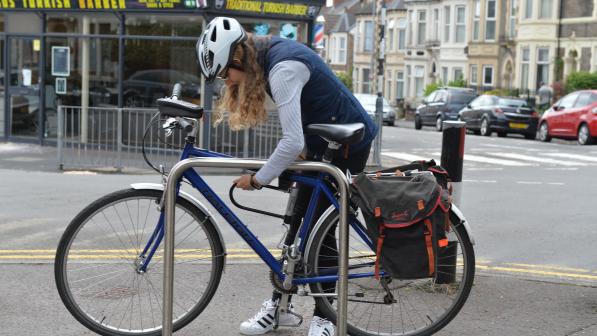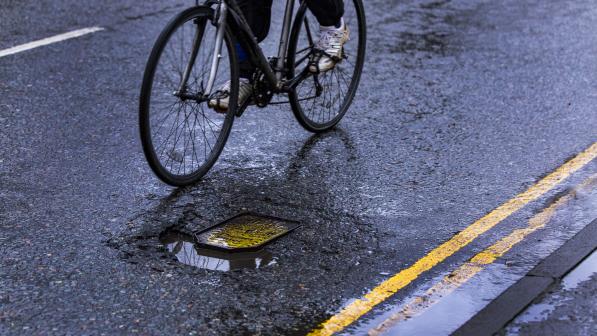What to do if you are involved in a cycling collision caused by a highway defect or pothole

Britain’s roads are riddled with defects (potholes and other irregularities) and although Highway Authorities (usually the County Council) have a duty to repair and fill these in, there’s always some that have lain unrepaired or which the Highway Authority may be unaware. Potholes present enough problems to drivers, but to cyclists they are a hazard with the potential to cause serious injury or even fatalities. Highway defect claims are invariably robustly defended, so please take advice before considering reporting to the Highway Authority.
Please note that design issues are different from inspection, maintenance, and repair obligations.
Please note that design issues are different from inspection, maintenance, and repair obligations.
Here is a helpful video on best to photograph a pothole or highway defect
Section 58(1) of Highways Act 1980 states:
That it is a defence (to a claim for damage resulting from failure to maintain) “if a Council can demonstrate that it has taken such care as in all the circumstances was reasonably required to secure that the part of the highway to which the action relates was not dangerous to traffic”.
The ‘circumstances’ include:
(a) the character of the highway, and the traffic which was reasonably to be expected to use it
(b) the standard of maintenance appropriate for a highway of that character and used by such traffic
(c) the state of repair in which a reasonable person would have expected to find the highway
(d) whether the Highway Authority knew, or could reasonably have been expected to know, that the condition of the part of the highway to which the action relates was likely to cause danger to users of the highway
(e) where the Highway Authority could not reasonably have been expected to repair that part of the highway before the cause of action arose, what warning notices of its condition had been displayed.
If the Highway Authority didn’t know about a defect, they can’t be expected to repair it.
This knowledge comes from regular inspections of road. However, even if roads are inspected with appropriate frequency, defects can be missed. It could be suggested that had the inspectors been attentive, the Highway Authority could be expected to know of the defect. Similarly, if the road is not inspected with sufficient regularity (3 times a month as opposed to just once) due to incorrect categorisation, that may also be a basis for alleging breach of duty.
What constitutes a pothole?
There is no universal definition of a pothole defect. The dimensions of what constitutes a pothole vary across local authorities. As a rule of thumb, however, if the hole in the road is at least 40mm deep and 300mm in length or breadth and sharp lipped, then it is deemed to be a dangerous defect.
Differences in level, longitudinal cracks, edge failings, dropped utility covers and depressions over previous reinstatements may also constitute an actionable danger. Each is considered on its own facts. Beware of puddles in wet weather as they may disguise a dangerous defect beneath the surface. By a process known as ‘hydraulics’ water forced into cracks by vehicle wheels accelerates the deterioration.
If you are involved in a dismount caused by a defect and sustain injury and/or damage to your bike, call the Cycling UK Incident Line before contacting the Highway Authority. If the defect is repaired before evidence is gathered it will be far harder to establish that the defect was dangerous.
Steps you should follow after a collision with a pothole/ defect
1. Evidence
First, take a photograph of the actual defect which caused the crash.
Get a landmark in the image, as otherwise the insurer may dispute that the image of the defect is the actual one responsible.
Then measure the length, breadth and depth and photograph the ruler or tape. Place a flat or straight edge across the defect and measure down to the base. It’s called pothole profiling.
An object from which a comparison may be drawn such as a feeding bottle, tyre lever or pump may serve as a temporary ‘prop’ as few cyclists carry investigative kit!
If dealing with a protuberance, for example a raised grid or tree root, reverse the process.
Then consider going to knock on some doors nearby and try to establish for how long the defect has been present. Ask anyone living or working nearby for how long they remember it being there – even consider accosting local dog walkers, joggers, or cyclists. Take names and contact details.
It’s important to gather as much evidence at the scene as soon as possible after the crash. The more time which passes, the greater the scope for an argument that the defect was not dangerous at the time of the crash
Cycle SOS have put together this helpful video to demonstrate how best to measure pot holes.
2. Safety
Investigation of a highway defect means entering the road, so please ensure personal safety. Try to pick a quiet time, take a companion, wear conspicuous clothing and consider placing warning triangle or a vehicle with hazard lights illuminated.
3. Injuries
Depending on the severity of your injuries, seek medical attention either in A&E or with your GP. If you (or more relevantly your family or companions) think you might be concussed, seek medical advice as soon as possible and don’t attempt to ride.
Don’t shrug off any injuries; arrange a check-up, either with your GP or via a walk-in centre.
Take photographs of bruises and soft tissue injuries; don’t be shy about this, get a friend to take them if you can’t get a good photo yourself.
Maintain a detailed record of all expenses, e.g., for prescription charges, bus and taxi fares, hospital parking fees and over-the-counter analgesics and dressings.
4. Assess your bike
Even if you aren’t injured, you will likely be somewhat disorientated.
If you’re unable to get picked up and decide to continue your ride, do so with the greatest of care having first checked over your bicycle to ensure it is safe and fully functional, especially the steering, brakes, wheels and forks.
If in doubt, don’t ride until the machine has received a professional appraisal.
Take photos of the damaged components.
Here is a helpful video on how to best to photograph damage to your bike or kit for a potential claim to get the best results.
5. Instruct a specialist solicitor
As a cyclist, it’s quite likely that hitting a defect in a badly maintained road will at least damage your bike and cause you injury. In these circumstances, the Highway Authority may be liable to pay you compensation but be aware that this is heavily evidence based and far from a ‘turn-key’ process. These claims are robustly defended, no matter how cycle-friendly the county council may appear.
If you have sustained any personal injury as a result of a crash involving a highway defect, you should call the Cycling UK Incident Line right away to speak with an experienced solicitor who will explain how to prepare and present the claim to best advantage.





